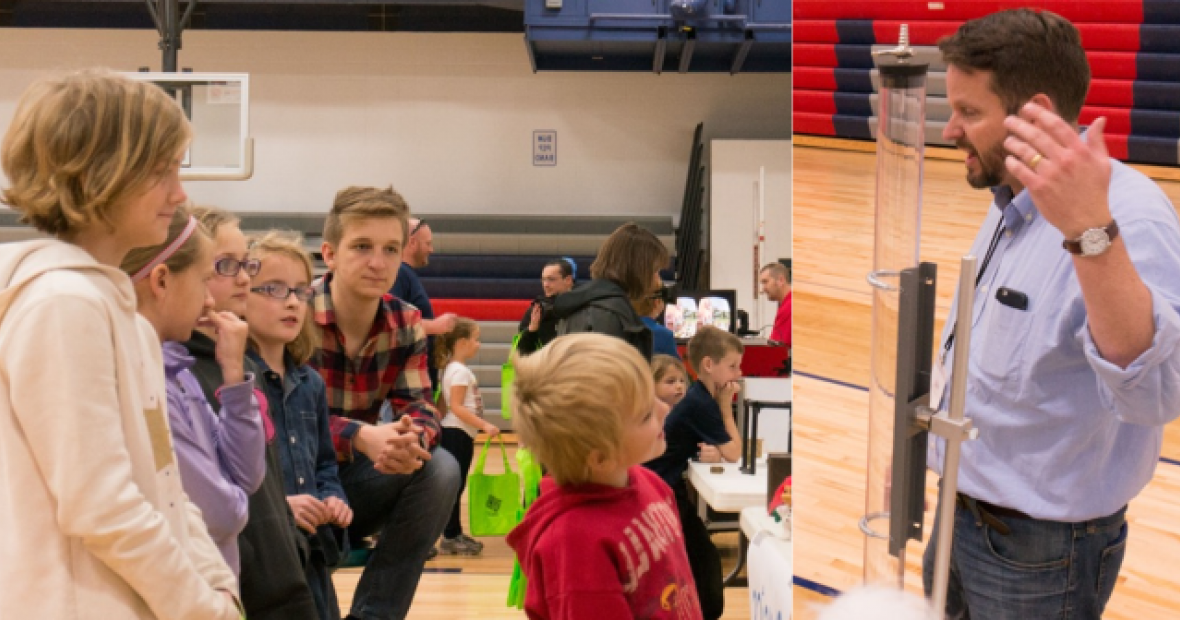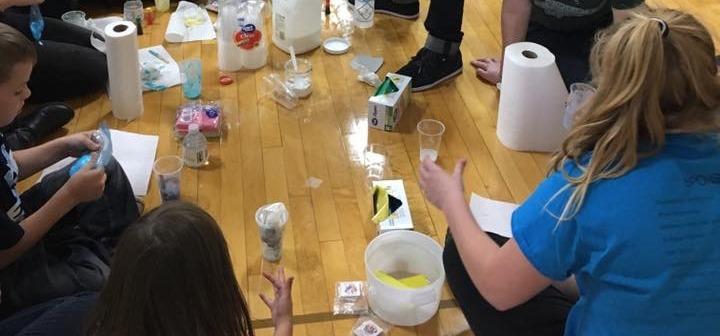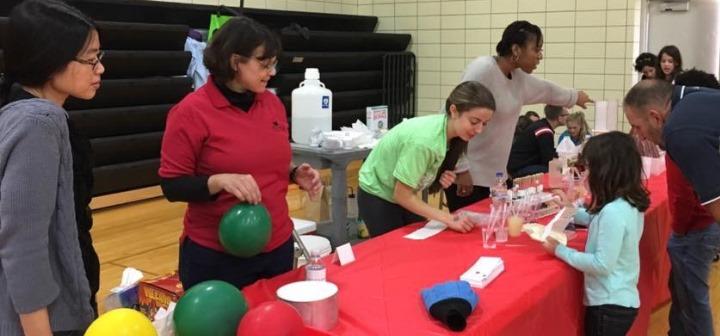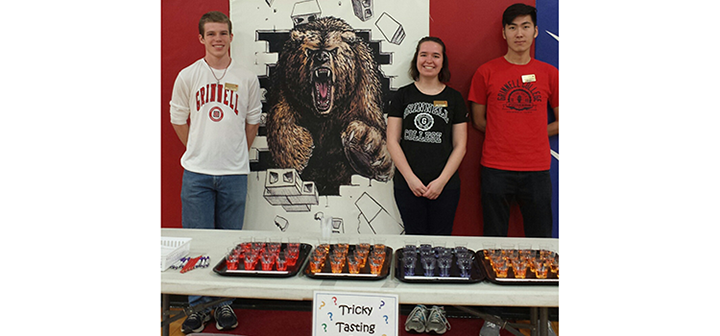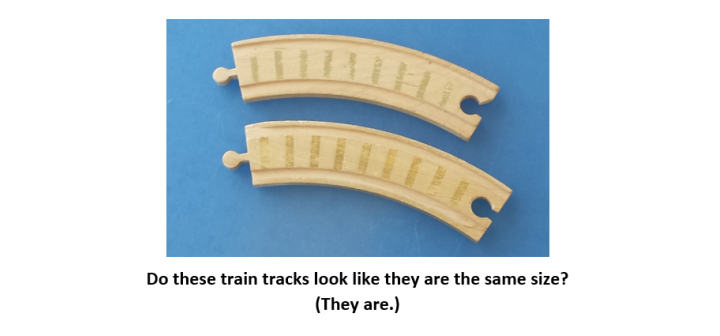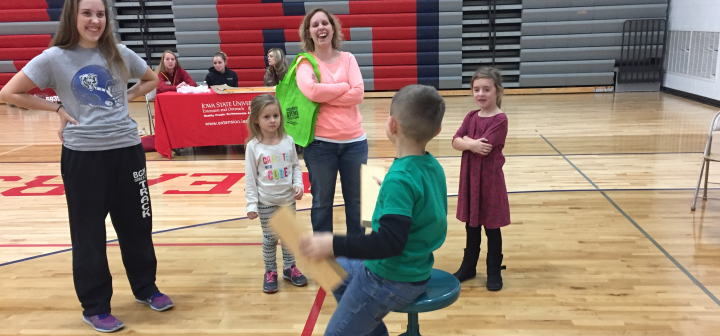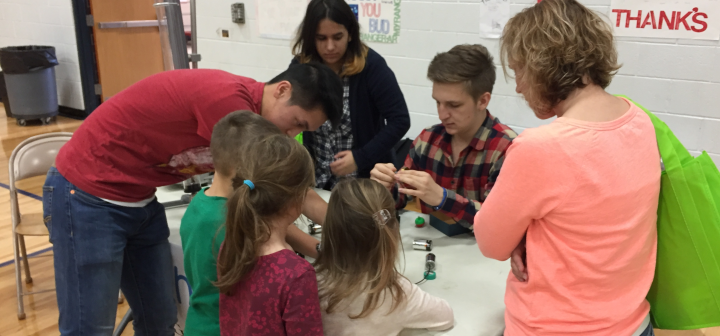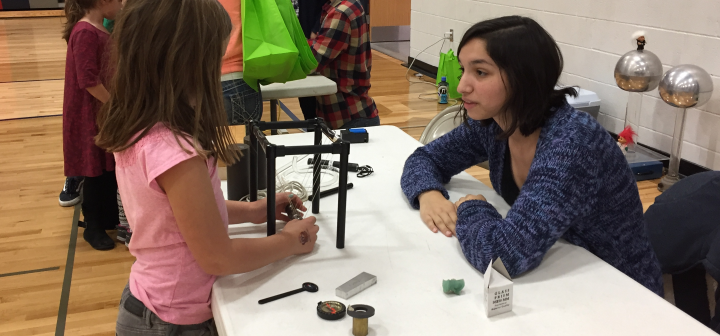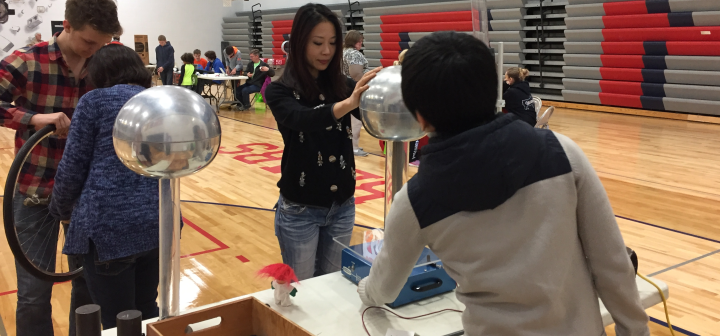Science Is Fun at Local STEM Fest
Students, faculty, and staff from the departments of chemistry, physics, and psychology presented demonstrations and information during the Poweshiek County STEM Festival on November 13, 2016. This outreach event used interactive activities to introduce pre-kindergarten through grade-8 children and their families from the community to careers in science, technology, engineering, and math (STEM).
Faculty and staff involved in the festival were Barbara Brown '89, Keisuke Hasegawa, Elaine Marzluff, Corasi Ortiz, Yee Mon Thu '04, and Jake Willig '95. Several Grinnell College students also assisted and engaged attendees our booths: Joe Beggs '19, Dani Evans-Schreiber '19, Phil Gemmel '17, Connor Gregorich-Trevor '18, Yangyi Liu '18, Sarah McCarthy '19, Valerie McGraw '17, Lacy Murray '17, Sarah Ruiz '19, Sanah Suri '20, Calvin Tang '20, and Whitney Teagle '18.
The Grinnell College students who volunteered were excited to pass on their enthusiasm for science to young people. McCarthy summed up her reason for participating,
"Outreach like this is so important because it can be hard for young students to develop an interest in a subject area if they cannot relate or look up to anyone in the field… varied mentors, teachers, and peers are needed to create a welcoming atmosphere surrounding the subject area. Once that foundation has been laid, a child can delve into their own education and become truly invested in the many possibilities for their own future."
Learning About Chemistry Using Household Materials
At the chemistry booth, attendees had a chance to find out how the volume of gases change with temperature, explore polymerization by making "slime", and make an acid-base indicator with purple cabbage. Many of the explorations used household materials, and attendees were given instructions for each activity so they could continue to explore at home.
"[We] showed children how to make slime from glue, water, and borax," said Gemmel. "It was exciting to see so many young kids light up when the consistency of their mixture suddenly became slimy!"
Balloons and liquid nitrogen were used to show how the volume of a gas is related to temperature. Also at the booth is the acid-base indicator made from purple cabbage. Visitors could test the acid-base properties of common substances and see if a chemical reaction was changing the acidity of the liquids being tested. Acidic substances turn the indicator liquid more red, basic substances turn the indicator liquid blue or green, and a neutral substance won't cause any color change.
Perceptions Challenged at Psychology Booth
Activities at the psychology booth included visual illusions (and explanations of why the mind sees what it does) and two "tricky" taste tests. Participants were urged to think about what other factors influence taste when comparing different fruit-flavored water that isn't colored as expected. For example, cherry-flavored drink might be colored orange or purple, altering your expectation of what it will taste like. The other taste test involved two strips of paper: one plain paper and the other with PTC (phenylthiocarbamide), which tastes bitter to about 70% of the population and tasteless to the rest. Ability to taste the bitterness is a genetically inherited trait, and often people who taste the PTC will find certain bitter foods (like broccoli, Brussel sprouts, and cabbage) unpleasant.
Gregorich-Trevor, Evans-Schreiber, and Liu assisted at the psychology booth. Afterwards, Evans-Schreiber said "I loved explaining to the students what was happening when their taste buds and eyes were tricked, but I also loved when the students figured out what had happened before we explained it."
One of the visual illusions is shown here. This illusion comparing the sizes of two pieces of toy train tracks was particularly intriguing to participants.
Light Bulbs Go Off Exploring Principles of Physics
Some of the demonstrations at the physics booth involved gravity, momentum, electronic circuits, and static electricity.
By spinning on a stool while holding weights, students could feel the effects of conservation of angular momentum by altering the distance at which they held the weights from their body (like an ice skater pulling their arms in will spin faster). McCarthy reflected, "It was so fun to watch the kids' faces light up when they were faced with confusion but then to see the pure joy when they understood why we were seeing certain physical phenomena."
With the help of physics students, visitors constructed simple electronic circuits to connect a battery and a light bulb.
Students could explore conservation of momentum and energy using a Newton's cradle.
Also at the physics booth was a Van de Graaff generator that produces static electricity to create a small spark or raise someone's hair.

